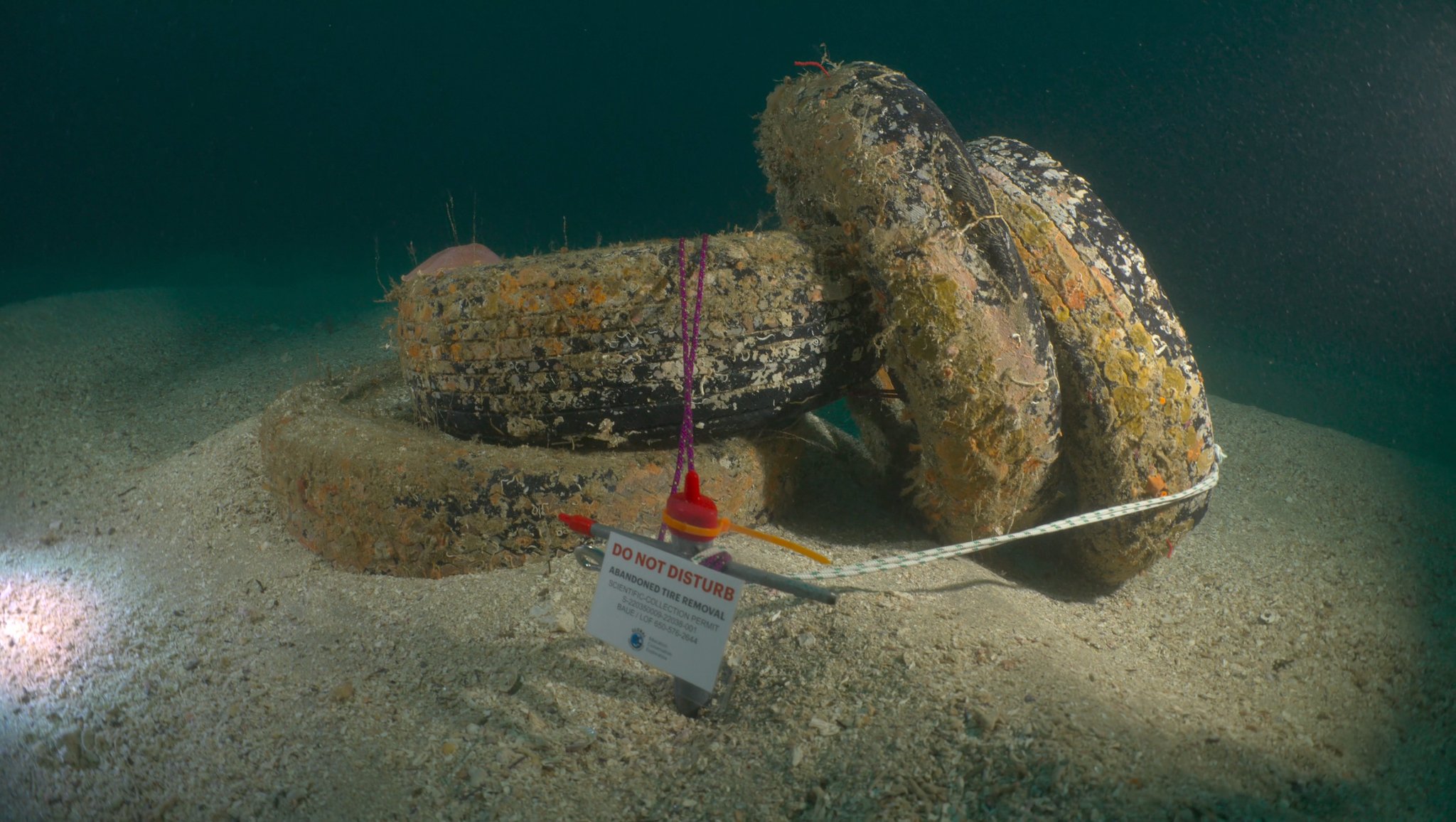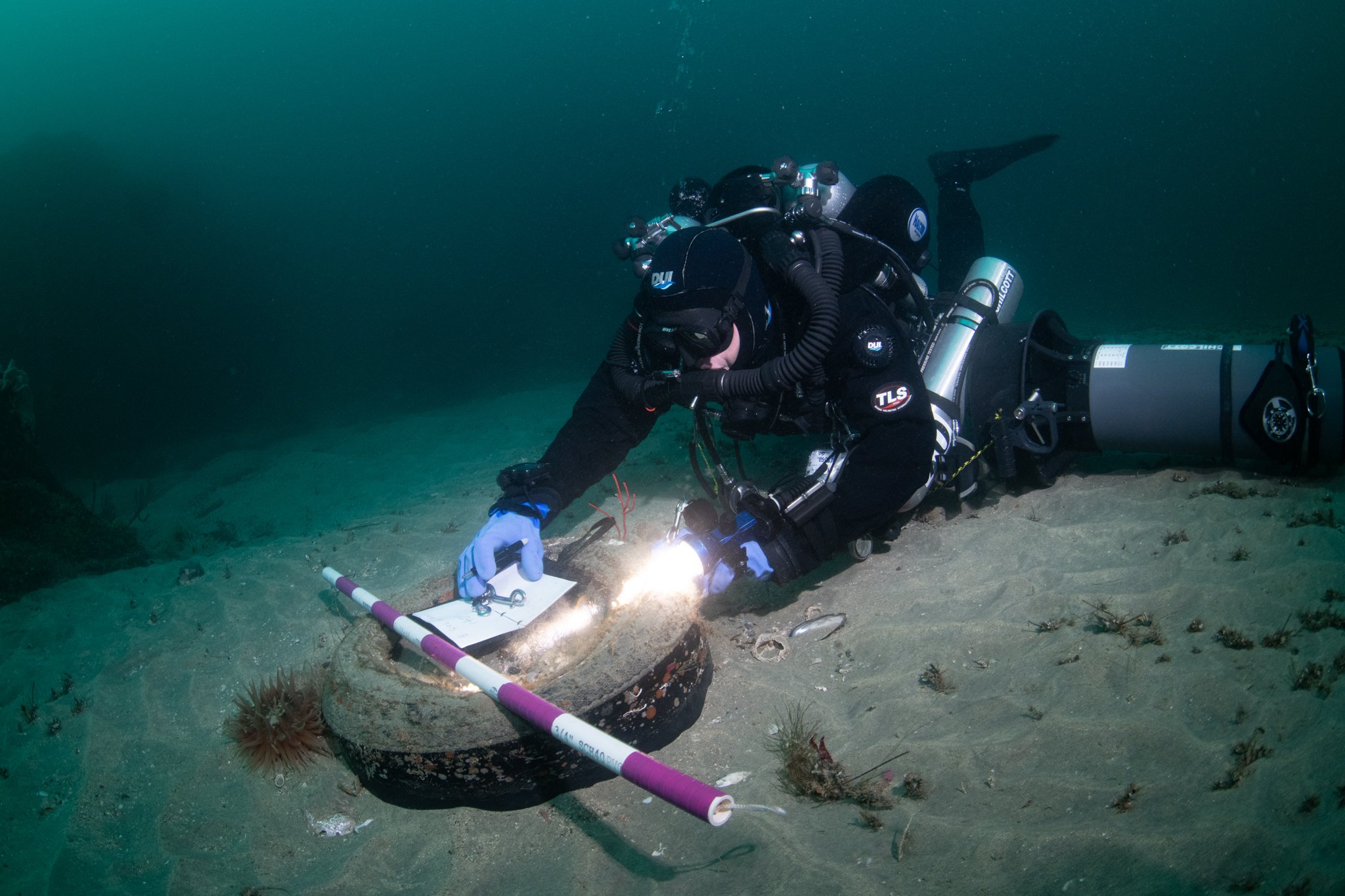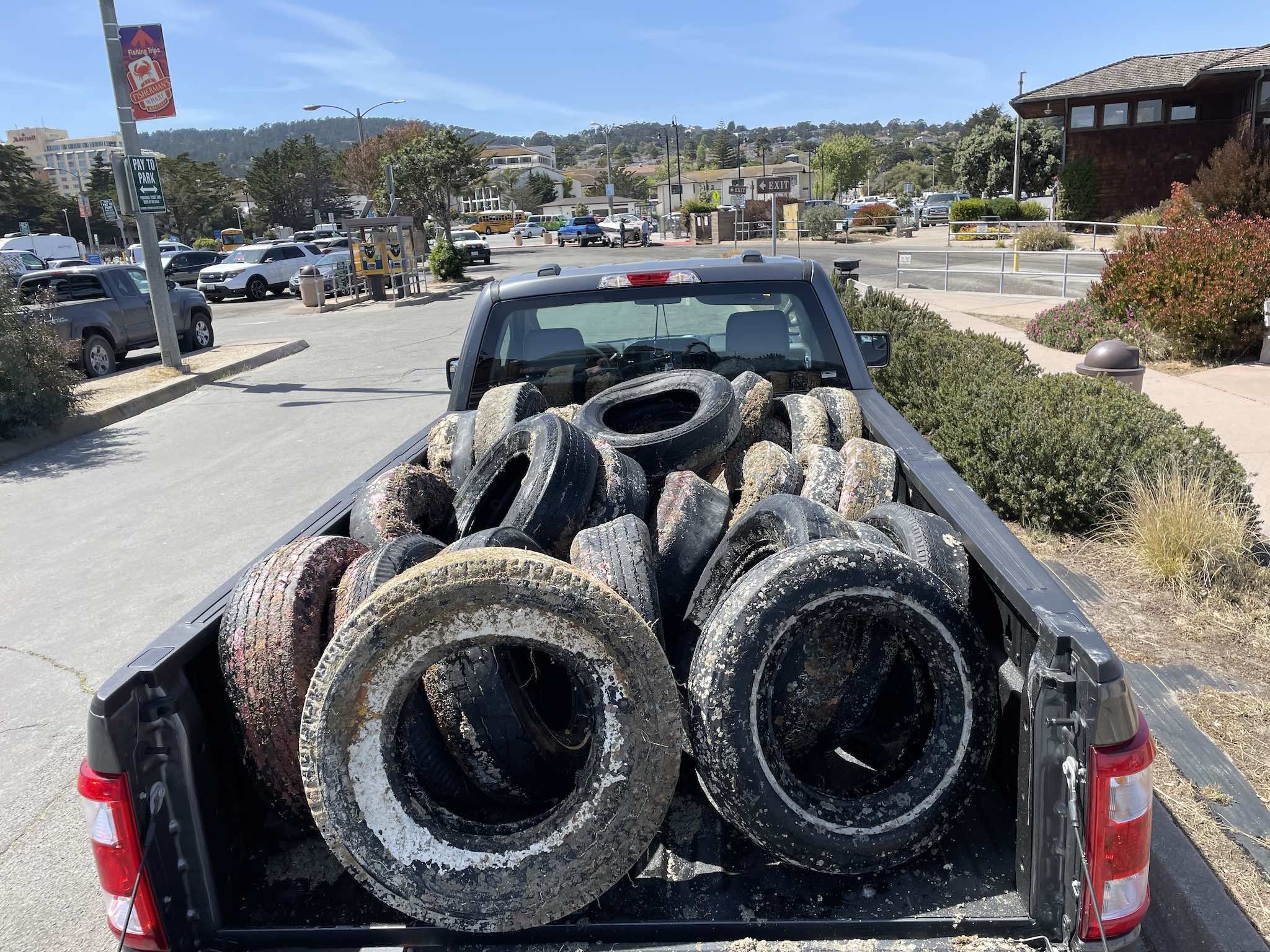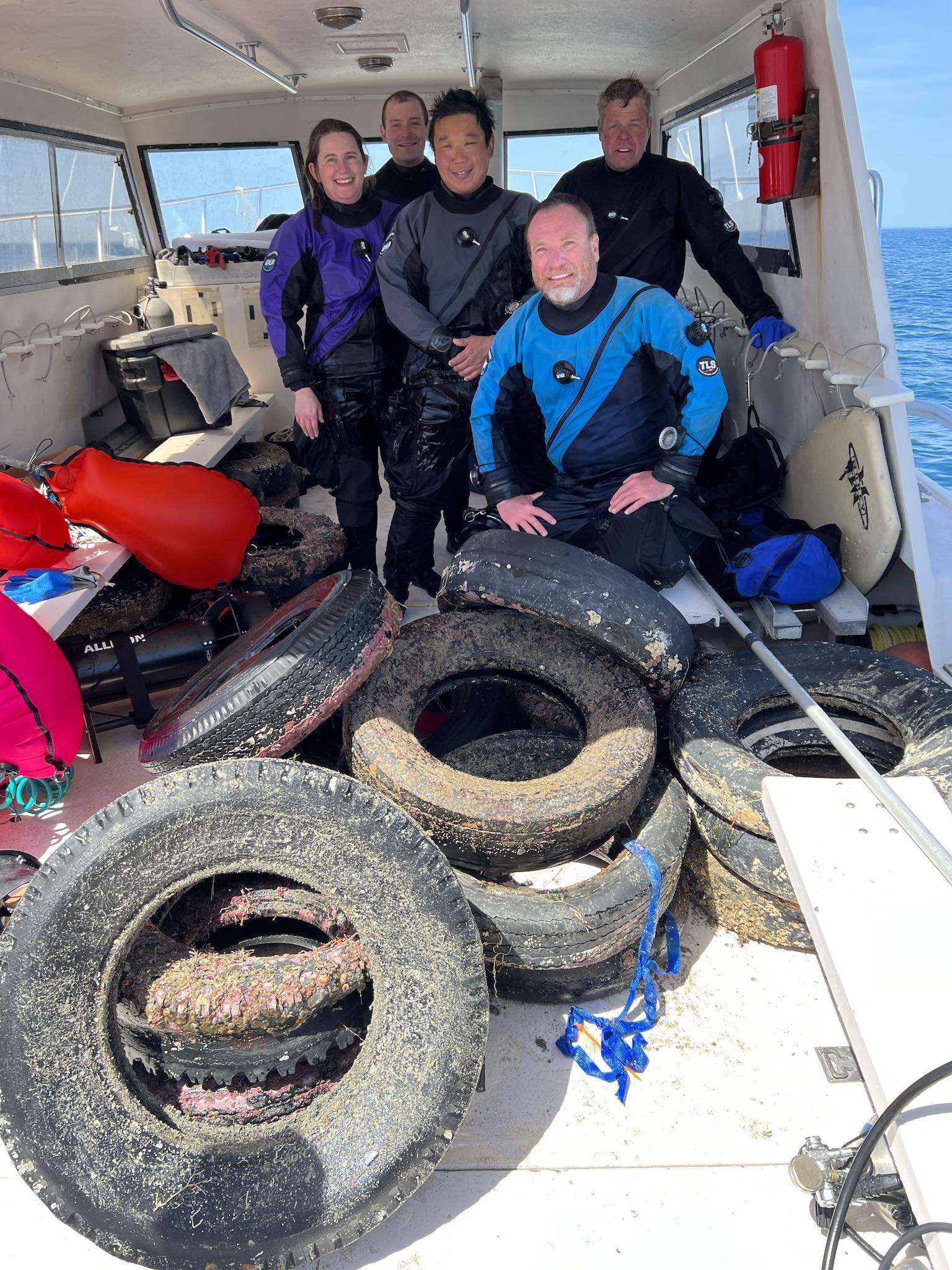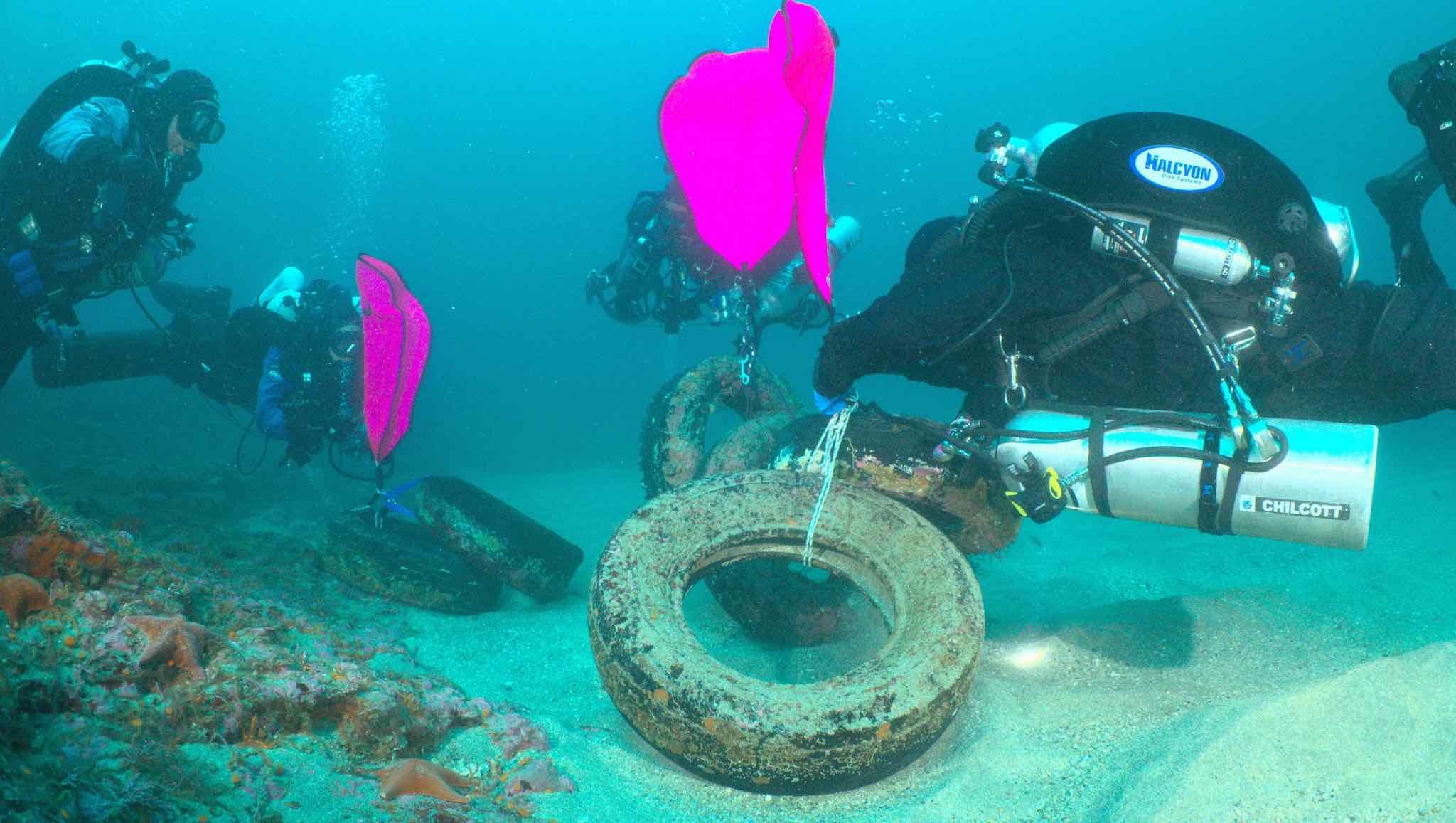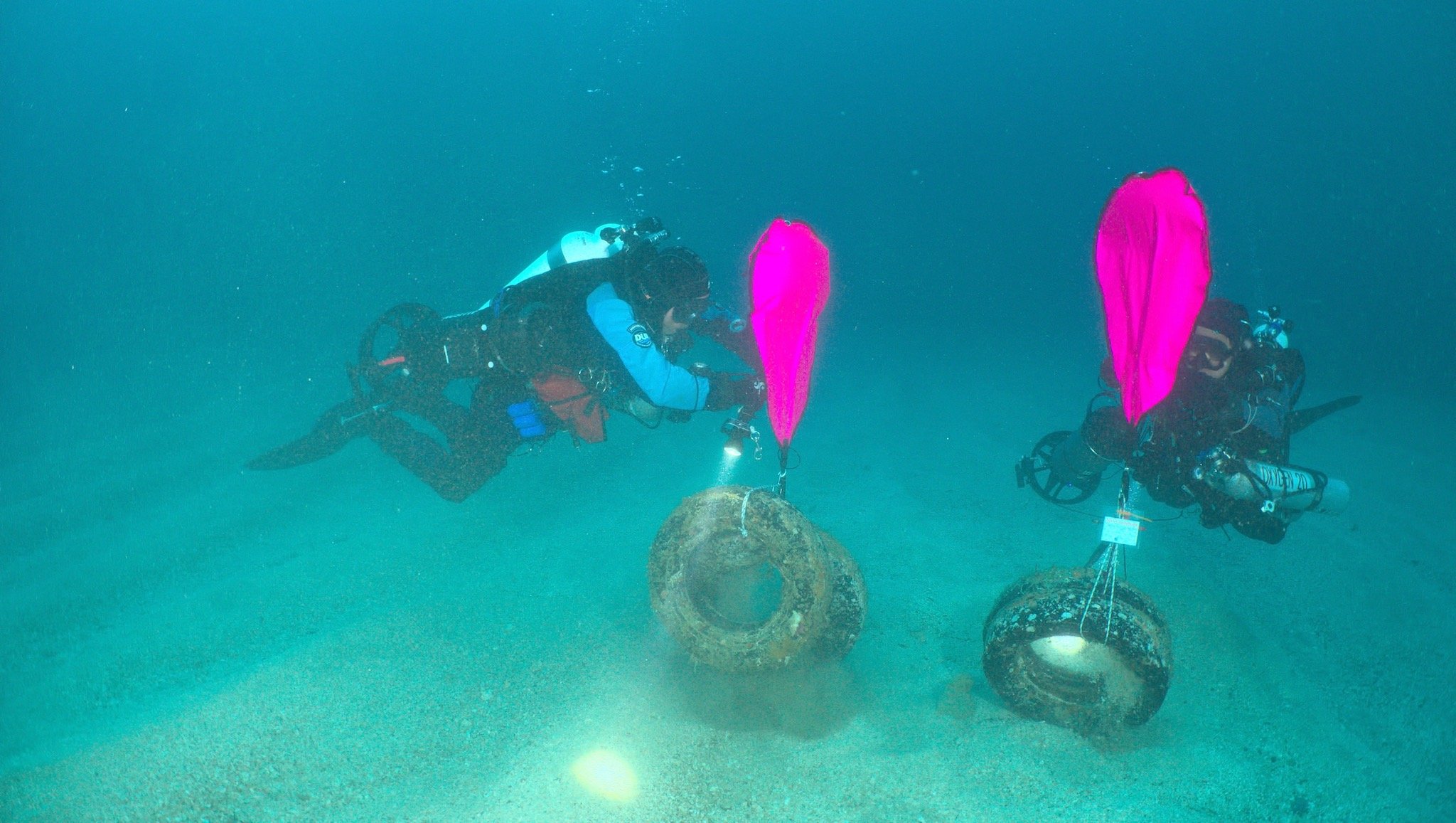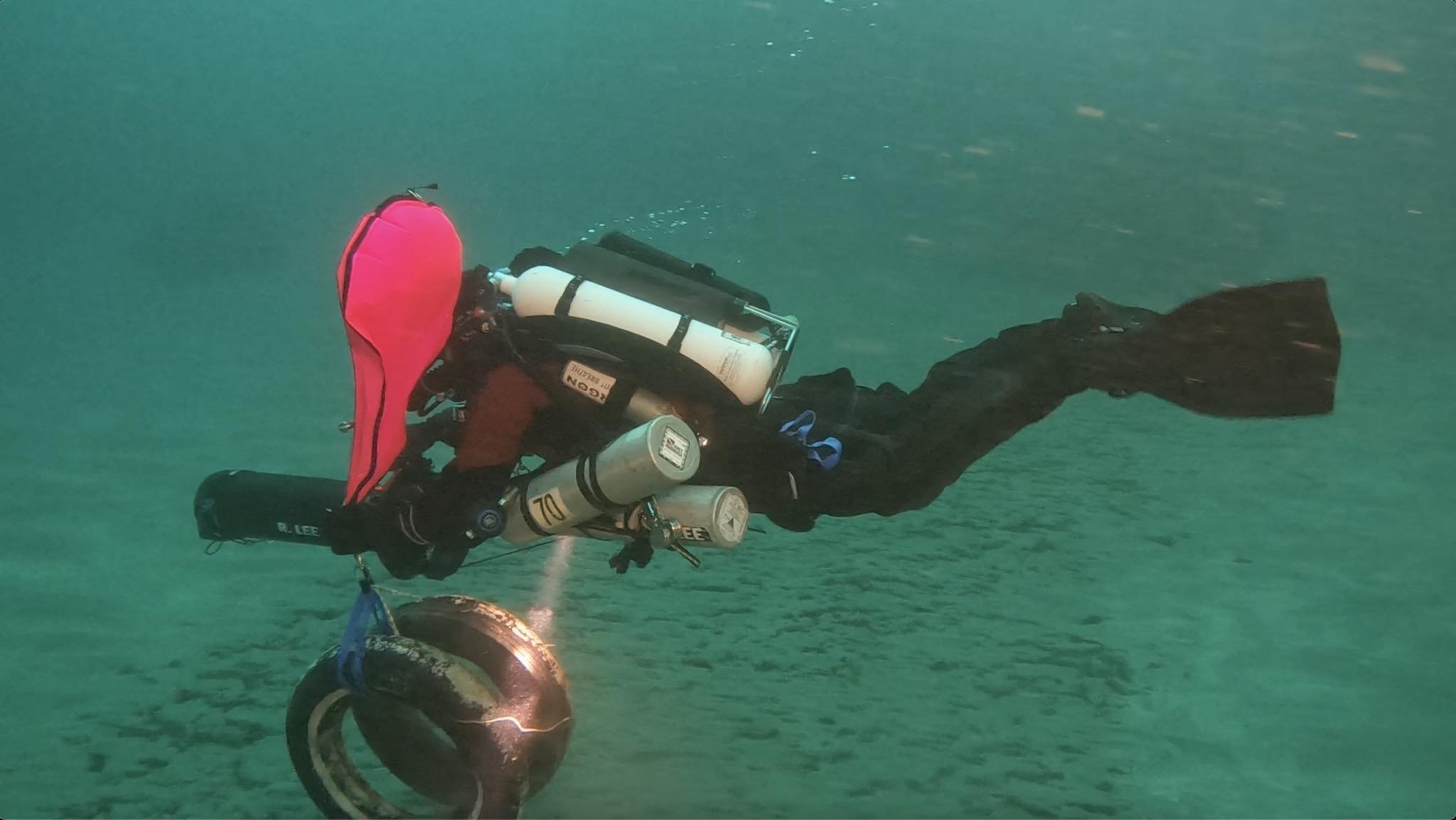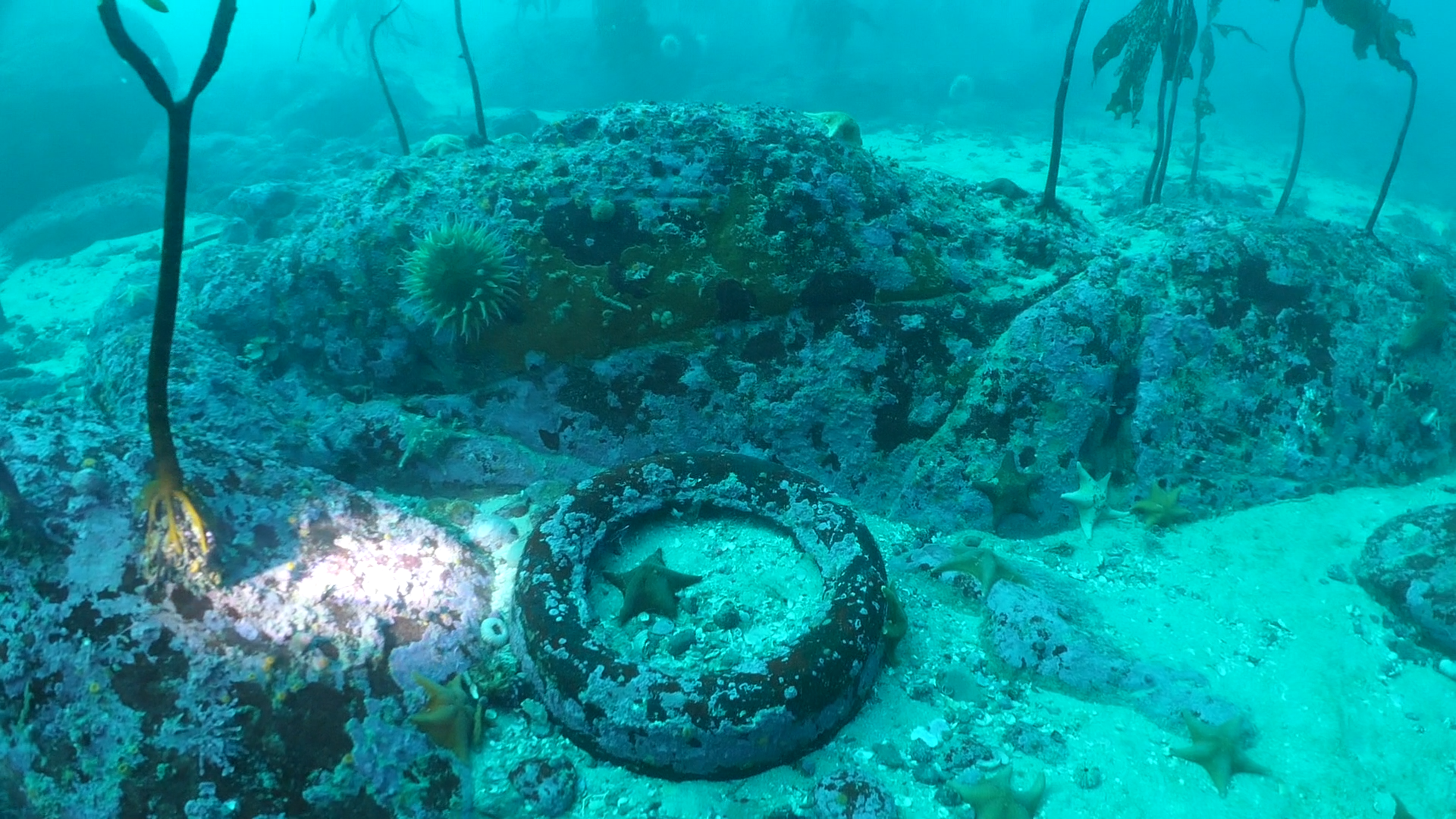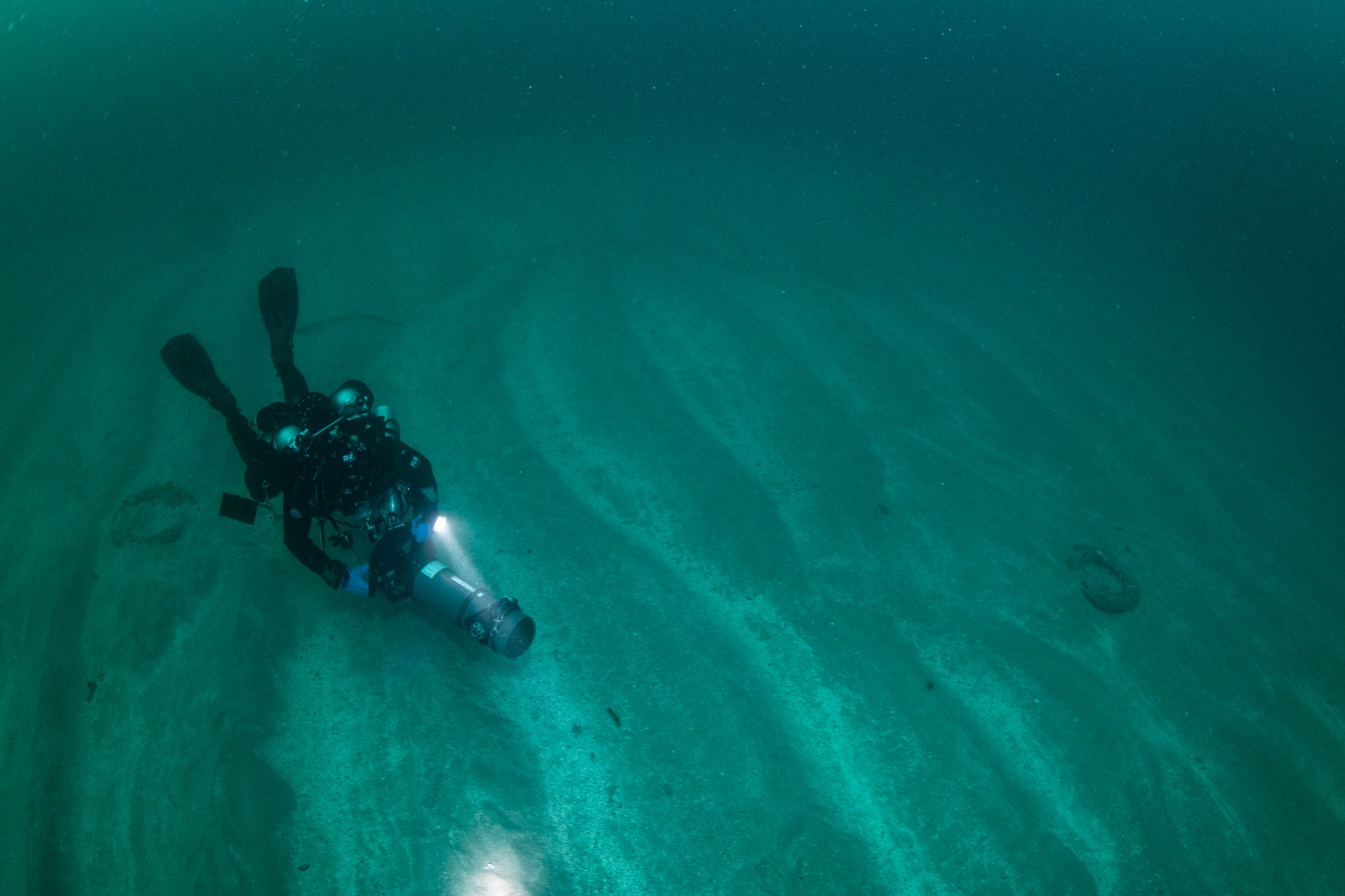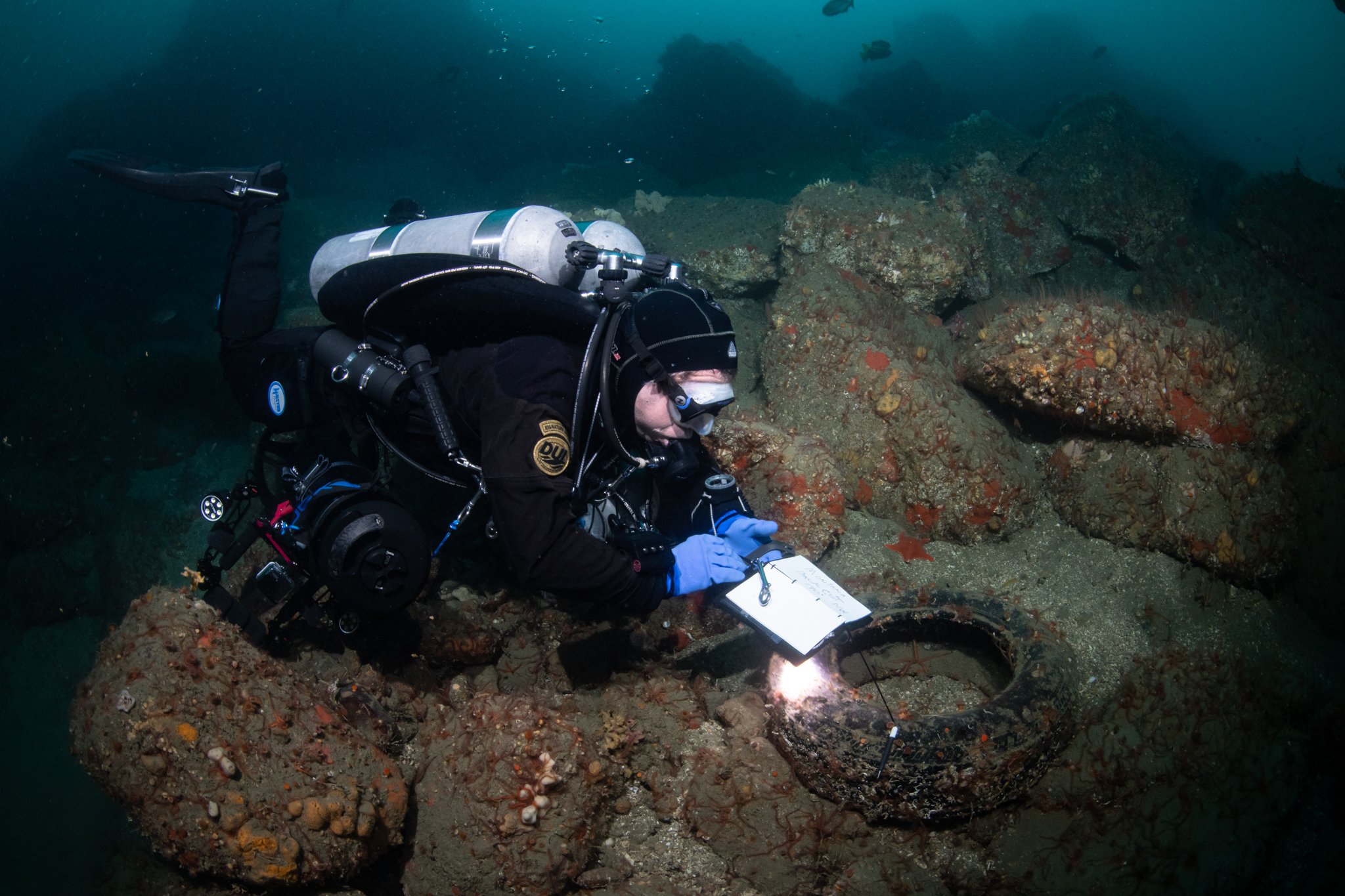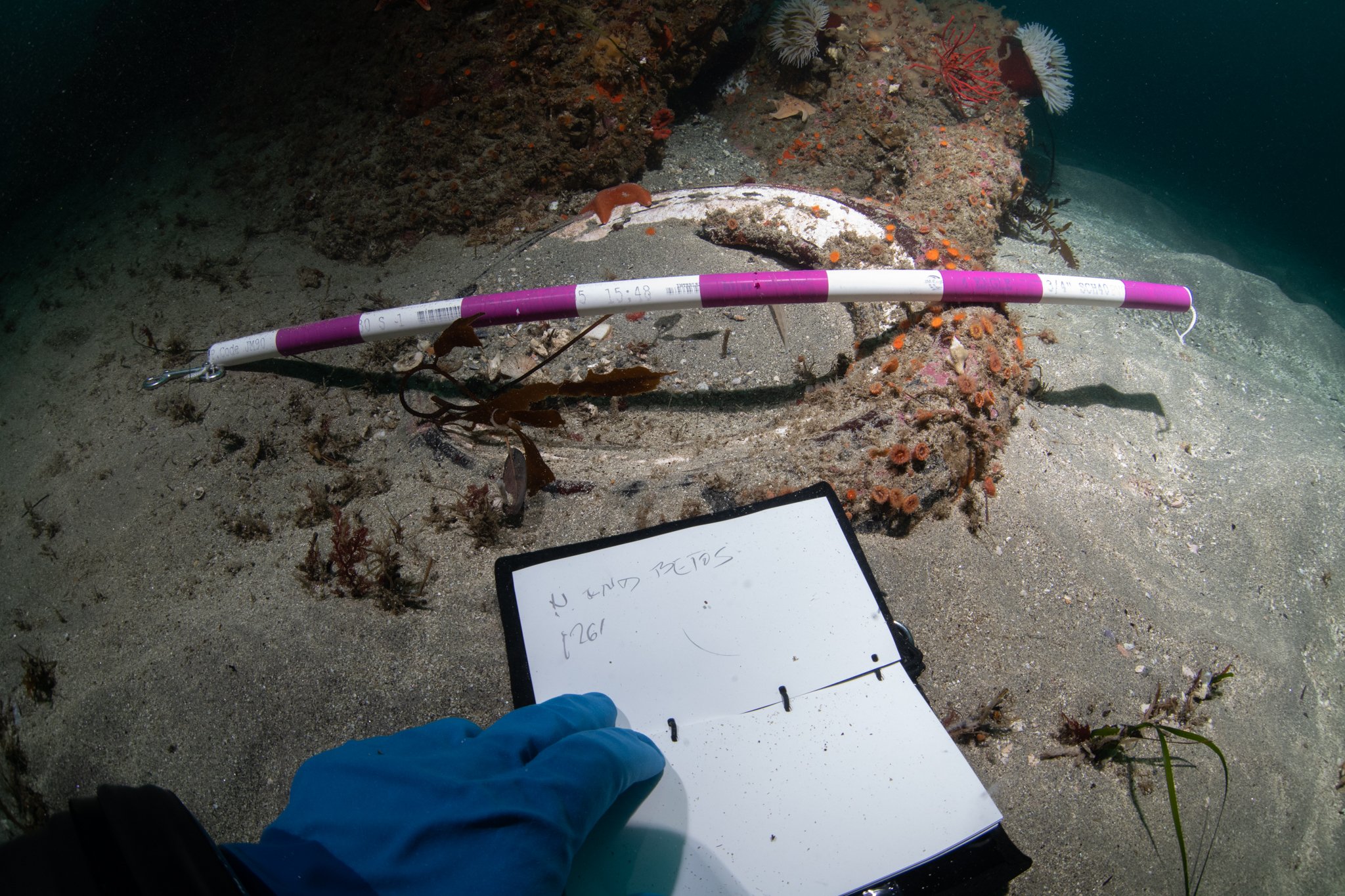Point Lobos Tire Removal
Project Overview
Numerous car tires (20+) have been identified over the years in and around the underwater diveable areas of Point Lobos State Reserve. The reserve, which is in Carmel, CA and within the Monterey Bay National Marine Sanctuary, is one of the crown jewels of the California State Parks system, and home to a rich underwater ecosystem frequented by divers.
The underwater tires, of unknown origin, are dispersed throughout the underwater areas of the reserve, mostly lying in the sand. Unfortunately, tires are well known to be harmful to the underwater ecosystem - displacing useful substrate without fostering marine growth and continuing to leach heavy metals and chemicals into the water for years.
While divers in the Point Lobos Reserve have known about these tires for years, it was not generally known how many tires were in the park, where all of them were located, and how they got there. In the last year, a group of volunteer divers with Bay Area Underwater Explorers (BAUE) and the Foundation decided to more systematically document, catalog and map the tires, and understand what it would take to recover the tires from the underwater park.
This project was conducted under a CA Fish and Wildlife Scientific Specific Use Permit #S-220350009-22038-001, and with approval from CA State Parks, and NOAA MBNMS.
Preparation
Recovering these tires presented several distinct challenges:
Exact number of tires and locations were not known, and needed to be surveyed and mapped
Tires were spread out across a wide area - (about half sq. mi), and fairly far from shore (about 1/2 mi)
This area falls within multiple protected areas - Monterey Bay National Marine Sanctuary, and Point Lobos State Natural Reserve - requiring additional permitting and permissions
To recover the tires, we needed a boat support platform, which requires additional coordination
The first step in framing the project and understanding its scope was to catalog all of the tires we knew about. Over the course of a dozen or so dives, the team of volunteers began to note locations and depths of tires that we encountered. We eventually catalogued over 20 tires, spread between depths of about 110’ to 170’, and across pretty much the entire divable area of Point Lobos. Most of the tires were embedded in the sand - some of them almost complete covered. Not surprisingly, almost none of the tires had much of any life on them, aside from fouling invertebrates such as some bryozoans, coralline algae and some small cup corals.
Once the tire locations were mapped, the next step was to secure permission for a recovery. As the reserve sits within multiple conservation areas, we needed to work with both California State Parks, California Fish and Wildlife, and NOAA’s Monterey Bay National Marine Sanctuary to move forward. We navigated the various permit processes, and documented not just the location of the tires, proposed method of recovery and project plan, but also our group’s extensive experience with project diving in these depths and conditions, given the sensitivity and depths of the areas we would be working in.
Project Plan and Execution
To recover the tires, we needed to manage several logistical challenges:
Tires were spread across a very large area, and quite far (1/4 - 1/2 mile) from shore
This area is normally only accessible by shore, due to Reserve regulations
The tires would need to be removed from the water, most likely by boat
Weather conditions to get a boat into the area are unpredictable
To simplify the recovery, we split the plan into two phases - setup and move the tires into a small number of collection points and the actual recovery. We would perform the setup dives from shore, and then bring the Escapade down to Lobos to do the final lifts.
Based on the distribution of tires within across Lobos, we identified 5 natural collection points: 1 at Twin Peaks, 1 on the Road to Twin Peaks, 2 collection points at Beto’s Reef, and 1 collection at Montana. To move the tires (and later lift them to the surface), we would need numerous liftbags, and to come up with a way to securely attach the liftbags to the tires - the last thing we wanted to do was to have tires come loose on the way up or at the surface. We worked out using a single loop of dockline as a sling for the tires that would allow us to easily lift two tires per liftbag, and Halcyon generously donated 5 additional liftbags for the tire recovery. To move the tires to the collection points, we would use the liftbags to get the tires neutral, and then drag them via scooter to the where we were collecting them - the smaller tires that were closer by, we could just pick up and drag manually. This also gave us a bit of practice using the sling loops and the liftbags, which we would need to repeat in a more timely fashion on the recovery dives.
Our original plan was to do the setup and recovery on back to back days, but because of rough weather, we decided to postpone the recovery dives, since that would require quite a bit of tight coordination with the boat support. Because of this, once the tires were collected, we needed a way to secure them together so that they wouldn’t get moved if the weather produced heavy swells. We did this by lashing all of tires together with our sling lines, and for the smaller piles, securing the pile to a temporary sand auger. In the process of scouting and collecting the tires, we now had a total of 25 tires identified, and collected into 5 piles spread over 3 general dive areas.
Twin Peaks (170’) - 4 collected
Road to Twin Peaks (130’) - 3 collected
Beto’s Reef North (110’) - 6 collected
Beto’s Reef South (95’) - 5 collected with 1 about 100’ away
Montana (140-170’) - 4 collected on SE side, and 2 more known on the N side
With the tires were collected into a small number of locations, we set about formulating a dive plan to lift all of the tires to the boat to be recovered. We initially were planning to use both a shore dive team and a boat team, but due to several weather cancellations and reschedules, we had a limited window to get this done and with only 5 divers to work with, which made it clear we would need to do multiple shorter dives per team. With most of the tires (12) collected at Beto’s Reef, we knew that would need the most divers working it, and would need most of the equipment (would need at least 6 liftbags). It being the shallowest of the areas also meant that it made sense to do that as a repetitive dive if we could get the deeper locations cleared out first. One additional consideration was that this shallower location was the one area that we might encounter other divers in the Park, so we wanted to minimize boat activity over this area. So this naturally led into a plan for 3-dive plan:
Dive 1: Montana (170’)
Drop at North end, secure and lift 2 tires
Scooter to South end collection point and lift 4 tires (2 bags)
Shoot SMB and drift-deco
Approx. Bottom time 20min, Decompression time 15min
Team: Rob, Allison, Gavin
Dive 2: Twin Peaks (170’)
Drop at North end, lift 4 tires from collection point (2 bags)
Scooter to 130’ collection point (~1000’ away); secure and lift 3 tires (2 bags)
Scooter East to Beto’s reef (~500’ away)
Shoot SMB, secure to collection point for dive 3; stationary ascent and deco
Approx. Bottom time 25min, Decompression time 17min
Team: Rob, Clinton, Kevin
Dive 3: Beto’s Reef (110’)
Both teams drop at SMB at collection pt. left from dive 2
Team 2 moves to South collection point, picking up 2 extra tires along the way
Team 2 secures and lifts 6 tires from South collection point (3 liftbags)
Team 1 secures and lifts 6 tires from North collection point (3 liftbags)
Both teams drift-decompress, retrieving SMB from Dive 2
Approx. Bottom time 25min, Decompression - min. Deco
Team 1: Rob, Allison
Team 2: Clinton, Gavin, Kevin
Project Team
| Diver | Role |
|---|---|
| Clinton Bauder | Recovery |
| Jim Capwell | Boat Captain |
| Gavin Chilcott | Setup, Recovery |
| Paul Festa | Setup |
| Zach Gwirtz | Setup |
| Allison Lee | Setup, Video Documentation, Recovery |
| Rob Lee | Setup, Photo Documentation, Recovery |
| Billy Palmer | Boat Crew |
| Kevin Schapansky | Setup, Video Documentation, Recovery |
Photos
Acknowledgements
This project is a collaboration with Bay Area Underwater Explorers (BAUE).
The project was supported by equipment donated by Halcyon Dive Systems.
Boat support was provided by Escapade / DiveCentral.

